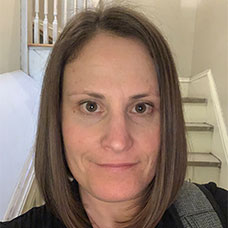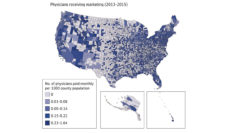On Jan. 14, the Trump administration’s secretary of health and human services issued an announcement intended to relax regulations around the prescribing of buprenorphine, a proven treatment for opioid use disorder. Addiction experts and activists welcomed the directive, but the Biden administration cancelled it two weeks later, stating that “the announcement was made prematurely.” The Biden team subsequently emphasized its commitment to addressing the opioid crisis via the proper channels.
The abrupt move to lift restrictions and its swift reversal are only the latest in a series of shifts in policy around a medication that saves lives in people who struggle with opioid use disorder, but remains underutilized in the U.S. The Covid-19 pandemic has both increased the urgency of increasing access to medications for opioid use disorder and prompted an easing of regulations.
Opioid-related overdose killed 50,000 Americans in 2019. The gold standard treatments for opioid use disorder are methadone and buprenorphine, but both are tightly regulated in the U.S. Federal law restricts the prescribing of methadone to dedicated clinics where many patients must appear daily to receive their medication. Physicians and other prescribers can only prescribe buprenorphine to treat opioid use disorder after completing eight hours of training and receiving certification — known as the X-Waiver — which permits them to treat up to 100 patients in the first year (they can apply to treat up to 275 annually thereafter).
Under the Trump announcement, any licensed physician would have been able to prescribe buprenorphine to treat opioid use disorder in up to 30 patients per year, effectively eliminating the X-Waiver for physicians and dramatically expanding the pool of potential buprenorphine prescribers. However, many doubted that the secretary’s directive even had the authority to change the regulations.
Improving access to buprenorphine to treat opioid use disorder ultimately means challenging an Act of Congress — the Drug Addiction Treatment Act of 2000 (DATA 2000) — which codified the X-Waiver. The waiver requirements, combined with pervasive stigma and providers’ discomfort with treating patients with opioid use disorder, mean that only 33% of the people who would benefit from these medications in the U.S. actually receive them.
Prescribers — including physicians, physician assistants, nurse practitioners, and others — can now prescribe buprenorphine to treat opioid use disorder in up to 30 patients per year, without additional training.
Recently, the ongoing overdose crisis collided with the Covid-19 pandemic, forcing policymakers to act. Covid-19 has been linked to a 35% increase in overdose deaths in March 2020, compared with the previous year. Early data suggests that changes to people’s daily routines, social isolation, and disruptions to the drug supply may be contributing to the surge in overdose deaths.
The federal government has responded with changes to regulations, including expanding telemedicine for prescribing medications to treat opioid use disorder. This means that certified prescribers can begin treating a patient with buprenorphine without an in-person visit. Likewise, certain patients receiving methadone can take up to 28 daily doses of the medication home instead of appearing daily or weekly at a dedicated clinic.
On April 1, 2021, the Biden administration’s Office of National Drug Control Policy issued its Statement of Drug Policy Priorities for Year One. Its first priority is “Expanding access to evidence-based treatment.” The statement appears to acknowledge that the White House alone likely cannot completely remove all restrictions on the prescribing of medications for opioid use disorder: “The Biden–Harris Administration will carefully examine this complex legal and regulatory web, decide which changes are critical, and put in place or recommend the needed regulatory or legislative changes.”
Accordingly, on April 27, the Department of Health and Human Services released new guidelines for the prescribing of buprenorphine. Prescribers — including physicians, physician assistants, nurse practitioners, and others — can now prescribe buprenorphine to treat opioid use disorder in up to 30 patients per year, without additional training.
These welcome changes represent major progress, especially in the inclusion of non-physician providers, but regulatory hurdles remain, particularly for those who wish to treat more than 30 patients per year. Providers also need to submit a form to the federal government to obtain the exemption, and many states impose their own restrictions on the prescribing of these medications.
Senators Hassan (D-NH) and Murkowski (R-AK) plan to reintroduce legislation soon to further lift restrictions. As the effects of the Covid-19 pandemic continue to exacerbate the opioid overdose crisis, these changes are long overdue.
Photo via Getty Images














